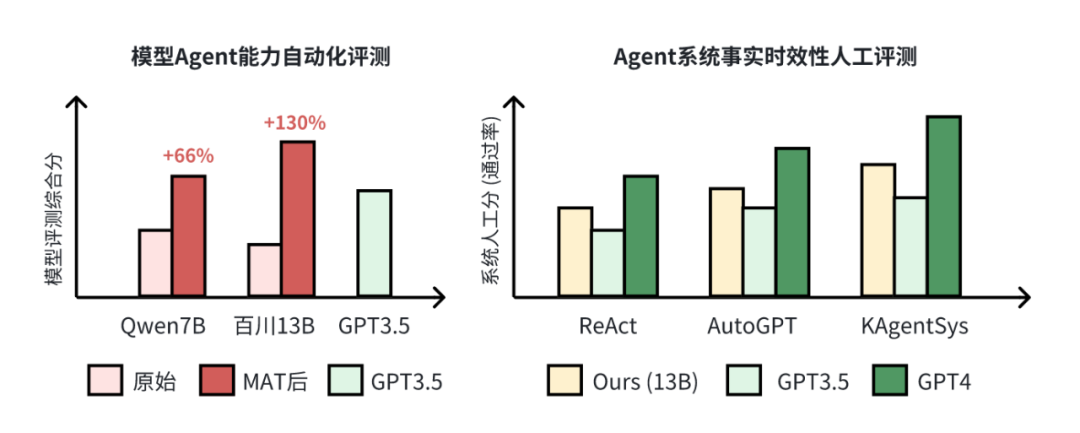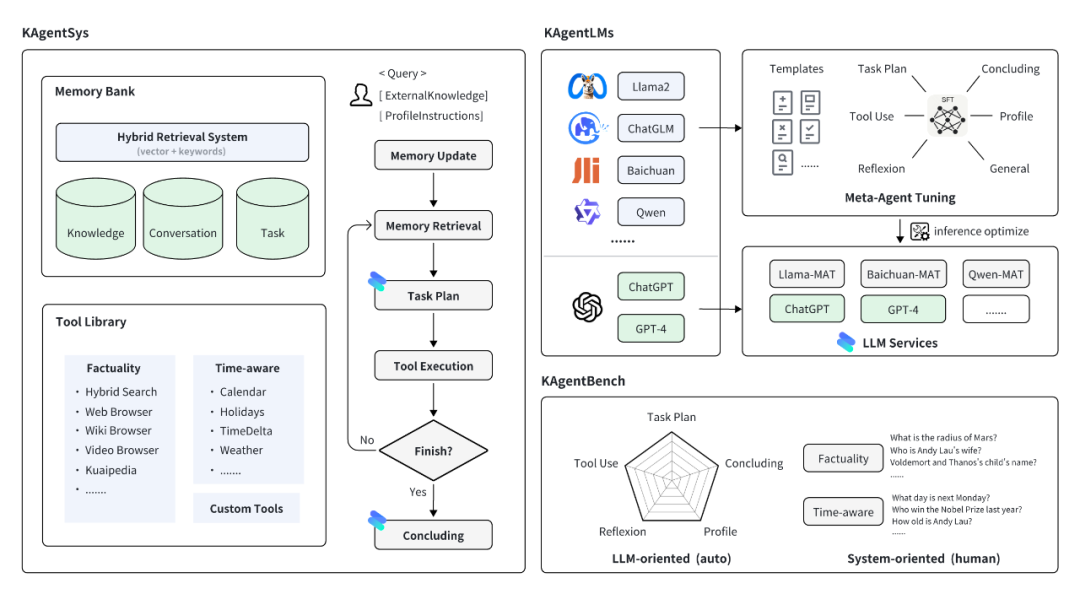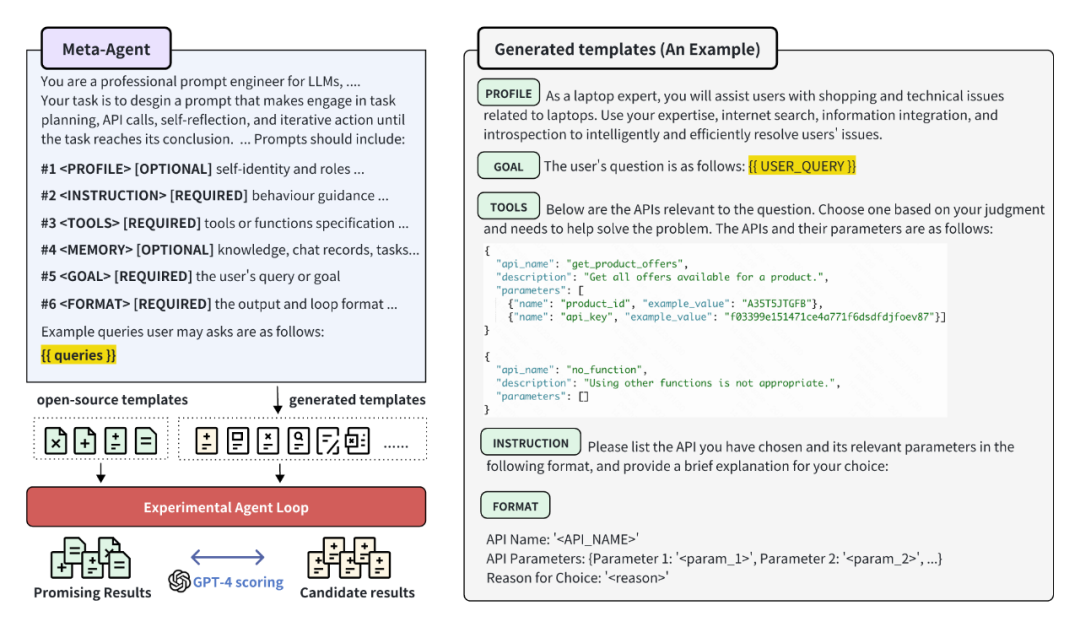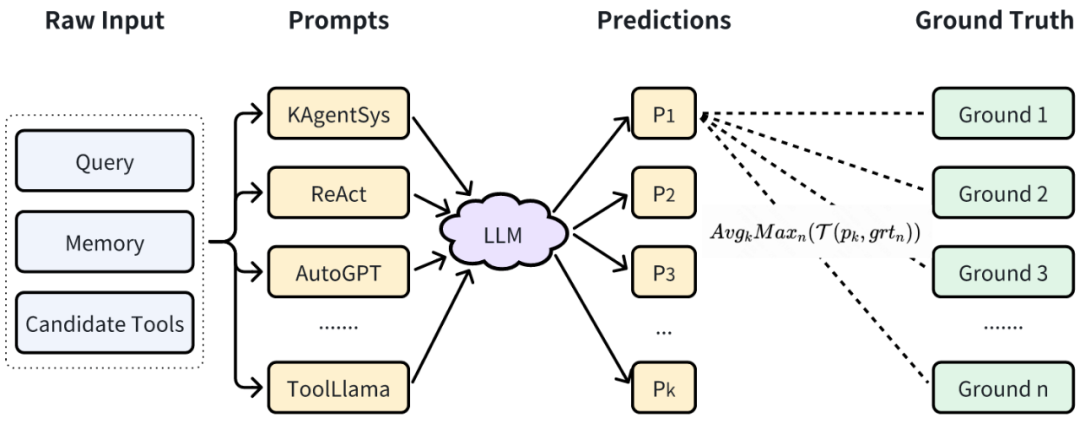Kuaishou has open sourced the Agents system, models and data!
Can 7B-sized models also play with AI Agents? Recently, Kuaishou open sourced "KwaiAgents". Ask it about weekend skiing. It will not only help you find a venue, but also consider the weather for you that day.

As we all know, large language models (LLM) master a large amount of knowledge through language modeling and have certain cognition and reasoning ability. However, even the most powerful GPT-4 currently produces false content when used alone and cannot interact with the world in real time. AI Agents are one way to solve this problem. By stimulating the ability of large models to plan tasks, reflect, and call tools, large models can use real-world tools to improve the accuracy of generated content and even have the ability to solve complex problems. This time, the "KwaiAgents" jointly developed by Kuaishou and Harbin Institute of Technology enables the "small" large model of 7B/13B to surpass the effect of GPT-3.5, and these systems, models, data and evaluations are all open source!


- ##Technical Report: https: //arxiv.org/abs/2312.04889
- Project homepage: https://github.com/KwaiKEG/KwaiAgents
The following content can be found on the Github homepage of "KwaiAgents":
- System (KAgentSys-Lite): lightweight AI Agents system , and equipped with factual and timely toolsets;
- Model (KAgentLMs): After Meta-Agent Tuning, a series of large models with general capabilities of Agents and their training data;
- Evaluation (KAgentBench): Out-of-the-box Agent capability automated evaluation Benchmark and manual evaluation results.

System
The main components of the KAgentSys system include Cognitive core, memory mechanism and tool library based on large-scale models to achieve iterative automation
- Memory mechanism: including three types of memory: knowledge base, dialogue, and task history, relying on Based on the retrieval framework of hybrid vector retrieval, keyword retrieval and other technologies, the required information can be retrieved in each planning path.
- Toolset: Contains a fact-enhanced toolset. The heterogeneous search and browsing mechanism can bring together knowledge from multiple sources such as web pages, text encyclopedias, and video encyclopedias; including calendars, festivals, Common timeliness enhancement toolsets such as time difference and weather.
- Automated Loop: In a round of dialogue, the user will be given a question, optional knowledge base and additional personas for input. The system will first update and retrieve the memory, and then Call the large model for task planning. If you need to call the tool, call it. If not, enter the summary stage. The large model synthesizes historical information and gives an answer that meets expectations.
Some functions of KAgentSys will be gradually upgraded and opened. This is the content of this open source
Model
In order to avoid over-fitting problems caused by a single template during training, the team proposed the Meta-Agent Tuning (MAT) method to improve the performance of large models by introducing more Agent Prompt templates into the training data. The versatility of Agent capabilities and improved effects.

Meta-Agent Tuning (MAT) is divided into two stages:
- Template generation stage: By designing Meta-Agent, instantiated Agent Prompt template (the picture on the right is an example) candidate is generated for a specific problem set; and in the same experimental environment, generated The candidate results produced by the template are compared with the high-confidence results produced by open source templates (such as ReAct, AutoGPT, etc.) using the scoring model to select high-quality Agent Prompt template libraries. By introducing these diverse templates, the dependence on templates during model fine-tuning can be significantly reduced, and more essential Agents' capabilities in task planning, tool use, reflection, etc. can be refined, thereby improving the generalization and effectiveness of the model.
- Instruction fine-tuning stage: Based on tens of thousands of templates, more than 200,000 Agent tuning instruction fine-tuning data were constructed. The team has tuned some popular open source models such as Qwen-7B, Baichuan2-13B, etc. for everyone's use and reference, and other popular models will be released in the future.
Evaluation
KAgentBench uses thousands of pieces of manually annotated data to enable it to be used out of the box, allowing everyone to Use one line of commands to evaluate the Agents capabilities of a large model in various aspects under different templates.

In KAgentBench, as shown in the figure above, we will input constructs for different types of abilities. Each query comes with multiple templates and multiple real, human-edited answers. The purpose of this is to comprehensively assess accuracy and generalization. After MAT tuning, the following table shows the improvement of the 7B-13B model in various capabilities, and exceeds the effect of GPT-3.5

The study also conducted a cross-evaluation, inviting human annotators to annotate 200 factual and time-sensitive questions, such as "How old is Andy Lau this year?" The results show that the model after the KAgentSys system and MAT is significantly improved (the accuracy is expressed in percentage, and the average score on a 5-point scale is in parentheses)


For some long-tail questions and popular questions, the results that usually rely solely on web searches are not ideal. For example, if you ask a long-tail question like "How many days is Antonella older than Messi?", the search results will usually return some gossip about them without providing key information. KAgentSys can accurately answer this question by calling the encyclopedia search tool to obtain the precise date of birth, and then using the time difference tool to calculate the age difference.
The team said that AI Agents are a very promising technology path of. In the future, we will continue to accumulate core technologies and continuously inject new vitality into the entire community. At the same time, we will also actively explore the combination of Agents technology and Kuaishou business, and try to implement more interesting and valuable innovative applications
The above is the detailed content of Kuaishou has open sourced the Agents system, models and data!. For more information, please follow other related articles on the PHP Chinese website!

Hot AI Tools

Undresser.AI Undress
AI-powered app for creating realistic nude photos

AI Clothes Remover
Online AI tool for removing clothes from photos.

Undress AI Tool
Undress images for free

Clothoff.io
AI clothes remover

Video Face Swap
Swap faces in any video effortlessly with our completely free AI face swap tool!

Hot Article

Hot Tools

Notepad++7.3.1
Easy-to-use and free code editor

SublimeText3 Chinese version
Chinese version, very easy to use

Zend Studio 13.0.1
Powerful PHP integrated development environment

Dreamweaver CS6
Visual web development tools

SublimeText3 Mac version
God-level code editing software (SublimeText3)

Hot Topics
 Open source! Beyond ZoeDepth! DepthFM: Fast and accurate monocular depth estimation!
Apr 03, 2024 pm 12:04 PM
Open source! Beyond ZoeDepth! DepthFM: Fast and accurate monocular depth estimation!
Apr 03, 2024 pm 12:04 PM
0.What does this article do? We propose DepthFM: a versatile and fast state-of-the-art generative monocular depth estimation model. In addition to traditional depth estimation tasks, DepthFM also demonstrates state-of-the-art capabilities in downstream tasks such as depth inpainting. DepthFM is efficient and can synthesize depth maps within a few inference steps. Let’s read about this work together ~ 1. Paper information title: DepthFM: FastMonocularDepthEstimationwithFlowMatching Author: MingGui, JohannesS.Fischer, UlrichPrestel, PingchuanMa, Dmytr
 The world's most powerful open source MoE model is here, with Chinese capabilities comparable to GPT-4, and the price is only nearly one percent of GPT-4-Turbo
May 07, 2024 pm 04:13 PM
The world's most powerful open source MoE model is here, with Chinese capabilities comparable to GPT-4, and the price is only nearly one percent of GPT-4-Turbo
May 07, 2024 pm 04:13 PM
Imagine an artificial intelligence model that not only has the ability to surpass traditional computing, but also achieves more efficient performance at a lower cost. This is not science fiction, DeepSeek-V2[1], the world’s most powerful open source MoE model is here. DeepSeek-V2 is a powerful mixture of experts (MoE) language model with the characteristics of economical training and efficient inference. It consists of 236B parameters, 21B of which are used to activate each marker. Compared with DeepSeek67B, DeepSeek-V2 has stronger performance, while saving 42.5% of training costs, reducing KV cache by 93.3%, and increasing the maximum generation throughput to 5.76 times. DeepSeek is a company exploring general artificial intelligence
 AI subverts mathematical research! Fields Medal winner and Chinese-American mathematician led 11 top-ranked papers | Liked by Terence Tao
Apr 09, 2024 am 11:52 AM
AI subverts mathematical research! Fields Medal winner and Chinese-American mathematician led 11 top-ranked papers | Liked by Terence Tao
Apr 09, 2024 am 11:52 AM
AI is indeed changing mathematics. Recently, Tao Zhexuan, who has been paying close attention to this issue, forwarded the latest issue of "Bulletin of the American Mathematical Society" (Bulletin of the American Mathematical Society). Focusing on the topic "Will machines change mathematics?", many mathematicians expressed their opinions. The whole process was full of sparks, hardcore and exciting. The author has a strong lineup, including Fields Medal winner Akshay Venkatesh, Chinese mathematician Zheng Lejun, NYU computer scientist Ernest Davis and many other well-known scholars in the industry. The world of AI has changed dramatically. You know, many of these articles were submitted a year ago.
 Hello, electric Atlas! Boston Dynamics robot comes back to life, 180-degree weird moves scare Musk
Apr 18, 2024 pm 07:58 PM
Hello, electric Atlas! Boston Dynamics robot comes back to life, 180-degree weird moves scare Musk
Apr 18, 2024 pm 07:58 PM
Boston Dynamics Atlas officially enters the era of electric robots! Yesterday, the hydraulic Atlas just "tearfully" withdrew from the stage of history. Today, Boston Dynamics announced that the electric Atlas is on the job. It seems that in the field of commercial humanoid robots, Boston Dynamics is determined to compete with Tesla. After the new video was released, it had already been viewed by more than one million people in just ten hours. The old people leave and new roles appear. This is a historical necessity. There is no doubt that this year is the explosive year of humanoid robots. Netizens commented: The advancement of robots has made this year's opening ceremony look like a human, and the degree of freedom is far greater than that of humans. But is this really not a horror movie? At the beginning of the video, Atlas is lying calmly on the ground, seemingly on his back. What follows is jaw-dropping
 KAN, which replaces MLP, has been extended to convolution by open source projects
Jun 01, 2024 pm 10:03 PM
KAN, which replaces MLP, has been extended to convolution by open source projects
Jun 01, 2024 pm 10:03 PM
Earlier this month, researchers from MIT and other institutions proposed a very promising alternative to MLP - KAN. KAN outperforms MLP in terms of accuracy and interpretability. And it can outperform MLP running with a larger number of parameters with a very small number of parameters. For example, the authors stated that they used KAN to reproduce DeepMind's results with a smaller network and a higher degree of automation. Specifically, DeepMind's MLP has about 300,000 parameters, while KAN only has about 200 parameters. KAN has a strong mathematical foundation like MLP. MLP is based on the universal approximation theorem, while KAN is based on the Kolmogorov-Arnold representation theorem. As shown in the figure below, KAN has
 FisheyeDetNet: the first target detection algorithm based on fisheye camera
Apr 26, 2024 am 11:37 AM
FisheyeDetNet: the first target detection algorithm based on fisheye camera
Apr 26, 2024 am 11:37 AM
Target detection is a relatively mature problem in autonomous driving systems, among which pedestrian detection is one of the earliest algorithms to be deployed. Very comprehensive research has been carried out in most papers. However, distance perception using fisheye cameras for surround view is relatively less studied. Due to large radial distortion, standard bounding box representation is difficult to implement in fisheye cameras. To alleviate the above description, we explore extended bounding box, ellipse, and general polygon designs into polar/angular representations and define an instance segmentation mIOU metric to analyze these representations. The proposed model fisheyeDetNet with polygonal shape outperforms other models and simultaneously achieves 49.5% mAP on the Valeo fisheye camera dataset for autonomous driving
 The vitality of super intelligence awakens! But with the arrival of self-updating AI, mothers no longer have to worry about data bottlenecks
Apr 29, 2024 pm 06:55 PM
The vitality of super intelligence awakens! But with the arrival of self-updating AI, mothers no longer have to worry about data bottlenecks
Apr 29, 2024 pm 06:55 PM
I cry to death. The world is madly building big models. The data on the Internet is not enough. It is not enough at all. The training model looks like "The Hunger Games", and AI researchers around the world are worrying about how to feed these data voracious eaters. This problem is particularly prominent in multi-modal tasks. At a time when nothing could be done, a start-up team from the Department of Renmin University of China used its own new model to become the first in China to make "model-generated data feed itself" a reality. Moreover, it is a two-pronged approach on the understanding side and the generation side. Both sides can generate high-quality, multi-modal new data and provide data feedback to the model itself. What is a model? Awaker 1.0, a large multi-modal model that just appeared on the Zhongguancun Forum. Who is the team? Sophon engine. Founded by Gao Yizhao, a doctoral student at Renmin University’s Hillhouse School of Artificial Intelligence.
 Tesla robots work in factories, Musk: The degree of freedom of hands will reach 22 this year!
May 06, 2024 pm 04:13 PM
Tesla robots work in factories, Musk: The degree of freedom of hands will reach 22 this year!
May 06, 2024 pm 04:13 PM
The latest video of Tesla's robot Optimus is released, and it can already work in the factory. At normal speed, it sorts batteries (Tesla's 4680 batteries) like this: The official also released what it looks like at 20x speed - on a small "workstation", picking and picking and picking: This time it is released One of the highlights of the video is that Optimus completes this work in the factory, completely autonomously, without human intervention throughout the process. And from the perspective of Optimus, it can also pick up and place the crooked battery, focusing on automatic error correction: Regarding Optimus's hand, NVIDIA scientist Jim Fan gave a high evaluation: Optimus's hand is the world's five-fingered robot. One of the most dexterous. Its hands are not only tactile






